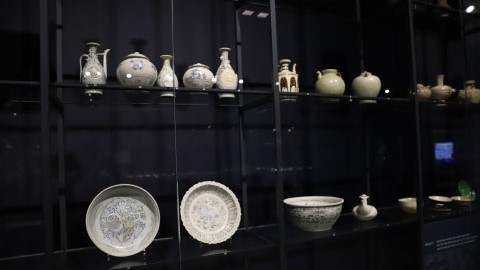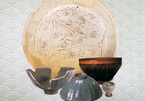 |
|
Vietnamese ceramic products displayed at Gwangju National Museum in the ROK. (Photo: Vietnam National Museum of History)
|
Seventy-three unique ceramic artefacts, dating from 3,500 – 3,000 years BP to the 19th century, were arranged in an exhibition space of nearly 680 square metres.
The exhibits, with a diverse and plentiful range items such as pots, jars and incense burners, have been collected and conserved by the Vietnam National Museum of History.
The exhibition is expected to become an opportunity for international friends in the ROK to have a comprehensive view of the formation and development of Vietnamese ceramic industry.
According to the National Museum of History, due to the complicated development of COVID-19 pandemic in the world and Vietnam, the two museums’ leaders agreed on the plan to deliver the artefacts in an online format.
Vietnamese museum will package and supervise the transport of artefacts to the airport in Vietnam; meanwhile, Gwangju National Museum is responsible for receiving and transporting products from the airport in the ROK to the museum. Nhan Dan

Findings of ceramic artifacts shed light on Vietnamese history
A large number of ancient Chinese porcelain dating back to Tang, Song, Yuan, Ming and Qing dynasties have been discovered at the relic of the Imperial Citadel of Thang Long.